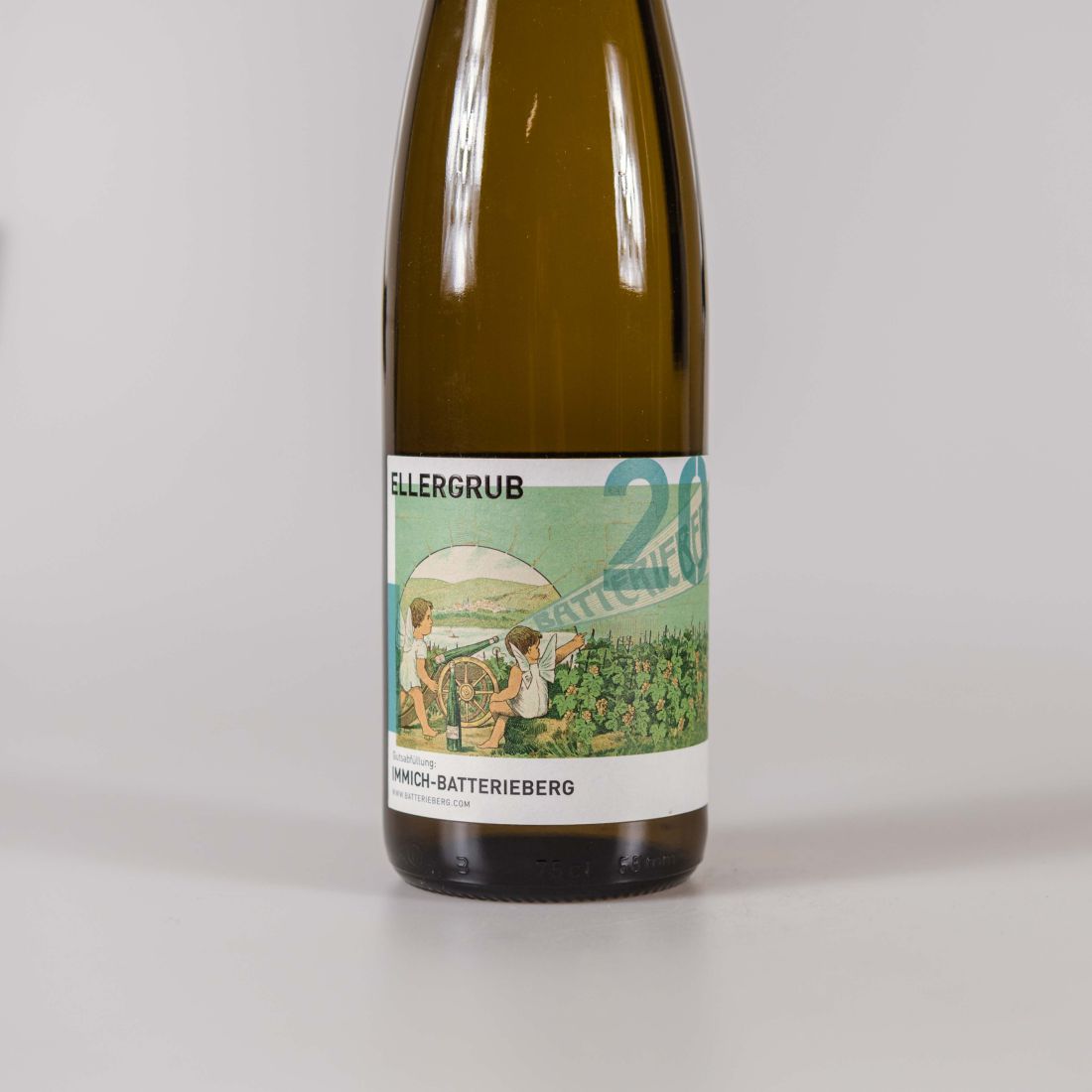| Vorig artikel | Toon lijst | Volgend artikel |
Enkircher Ellergrub - Riesling (19)
Riesling | 80+ jaar oude stokken, ungrafted | blauw schiefer | monopole wijngaard van 2,1 hectare | echte ‘sponti’ riesling | rijp fruit | smokey | diepgang | zeer grote wijn | potentieel tot 40-50 jaar verder rijpen | 13 gram restzoet helemaal in balans
Immich Batterieberg
De man achter de wijnen van Immich-Batterieberg is Gernot Kollman. Na stages bij Dr.Loosen, van Volxem en 4 jaar bij Weingut Knebel, besloot hij in 2009 het toen failliete wijngoed Immich Batterieberg te kopen om daar zijn eigen wijn te produceren. Gernot staat bekend om zijn fraaie beendroge stijl Riesling die hij spontaan vergist op eikenhouten voeders in de Mosel. Minder restzoet, maar een spatzuivere, energieke levendige wijn met een betere expressie van de wijngaard. Een Riesling met enorme klasse! 94/100 Stephan Reinhardt
Review
Bottled in late August 2019, this finished with 12.5% alcohol and still left behind an entirely benign – indeed, efficacious – 13 grams of residual sugar. Pear and apple on the nose are wreathed in honeysuckle and significantly marked by the piquancy of their seeds. The lusciousness of fruit and headiness of inner-mouth perfume displayed on a seductively silken palate will come as no surprise to anyone who, like me, preceded the tasting of this wine with a sampling of the estate’s exceptional 2018 vintage “Escheburg” cuvée. And there is even an unexpected sense of buoyancy. Alkaline and stony nuances set up a fascinating, undulating interplay with the fruits and flowers, while the aforementioned piquancy serves for further counterpoint, cutting the wine’s richness, on a superbly sustained, mouthwateringly salt-tinged finish. 94/100 David Schildkecht
Gernot Kollmann expressed surprise at how little stress his vines seemed to have suffered from the heat and drought of 2018, even though his immediate sector saw virtually no rain for three months. In an effort to allow the beneficial effects of September rain to be properly felt, Kollmann didn’t begin picking until the last days of September (though contract fruit began arriving from September 22). What’s more, he was among those convinced that with such lovely weather and relatively stable grape analytics as prevailed in October, it was worth stretching out the harvest in hope of enhanced aromatics. The last day of picking here wasn’t until October 22. “During the final two weeks,” he related, “the must weights never significantly budged.” Not only will there be two “Reserve” bottlings from 2018 – a Batterieberg and a Zeppwingert – there will even be an “Escheburg Reserve,” not to forget a Batterieberg Auslese (reviewed below). In contrast with prevailing thinking, Kollmann – who always places significant emphasis on “structure” in wine – believed that retaining buffering solids was important not just for structure’s sake but also to enhance texture and integrate alcohol in his 2018s, so not only did he permit the grapes something approaching their usual period of pre-fermentative maceration (seldom less than 12 hours), he also refrained from letting the must settle significantly after pressing.
Like a number of Middle Mosel growers – and despite a pre-fermentative regimen (as just described) that might be thought capable of compensating for low yeast nutrients – Kollmann experienced sluggish 2018 fermentations, one result of which was that even his “regular” Zeppwingert and Batterieberg, as well as his Steffensberg and Zollturm, were still in cask and in part actively fermenting when I visited in late November 2019, so I haven’t yet tasted any of them. “They will all drink dry,” Kollmann sought to assure me last November, “even if a couple have ten or a dozen grams of residual sugar.” In the event, his Zollturm apparently had other ideas and has ended up being bottled as Spätlese. I’ll complete my account of this estate’s vintage 2018 collection, then, at such time as I offer my initial report on its 2019s. The estate wines, incidentally, are now all certified organic. (For an extended account of this historic estate, its vineyards, its largely ancient vines, and its recent revival, consult the introduction to my coverage of its 2014s; and for a bit more on the evolution of its style, see the introductions to my reports on the 2015s and 2016s.)



